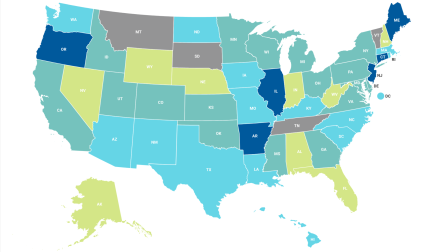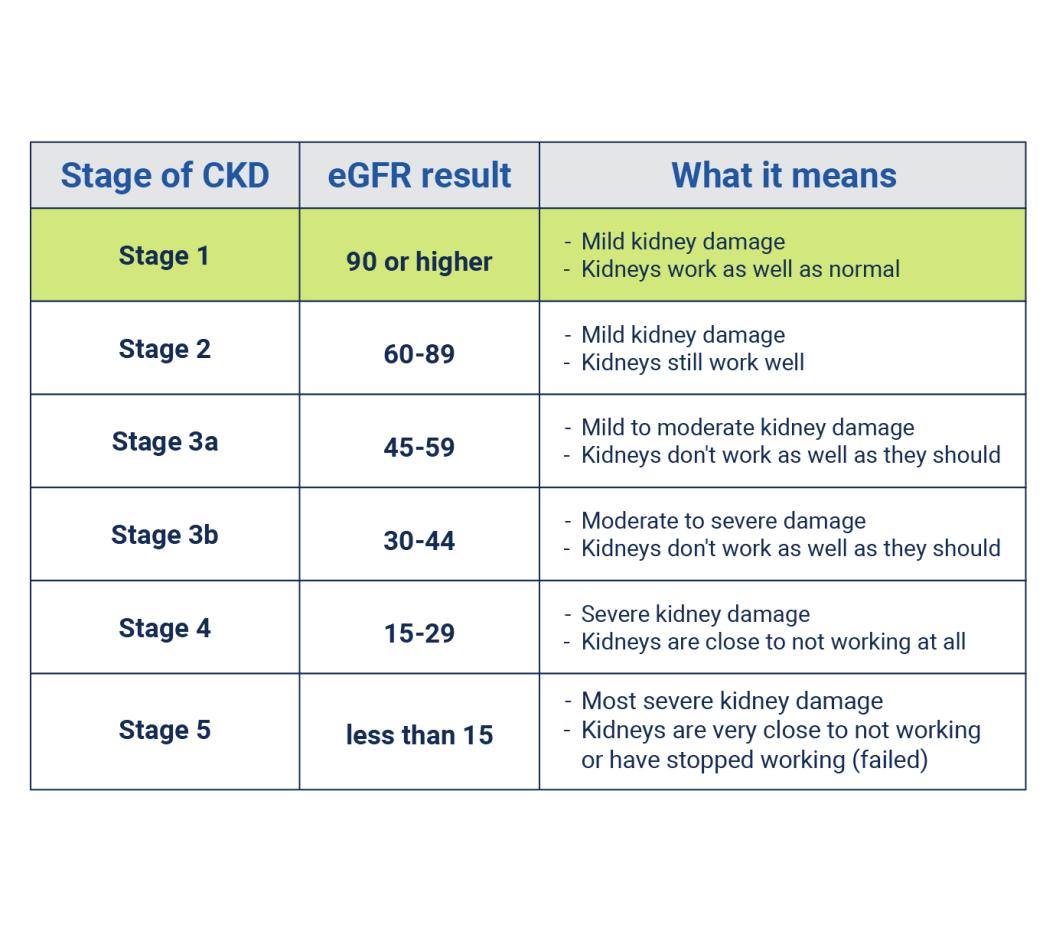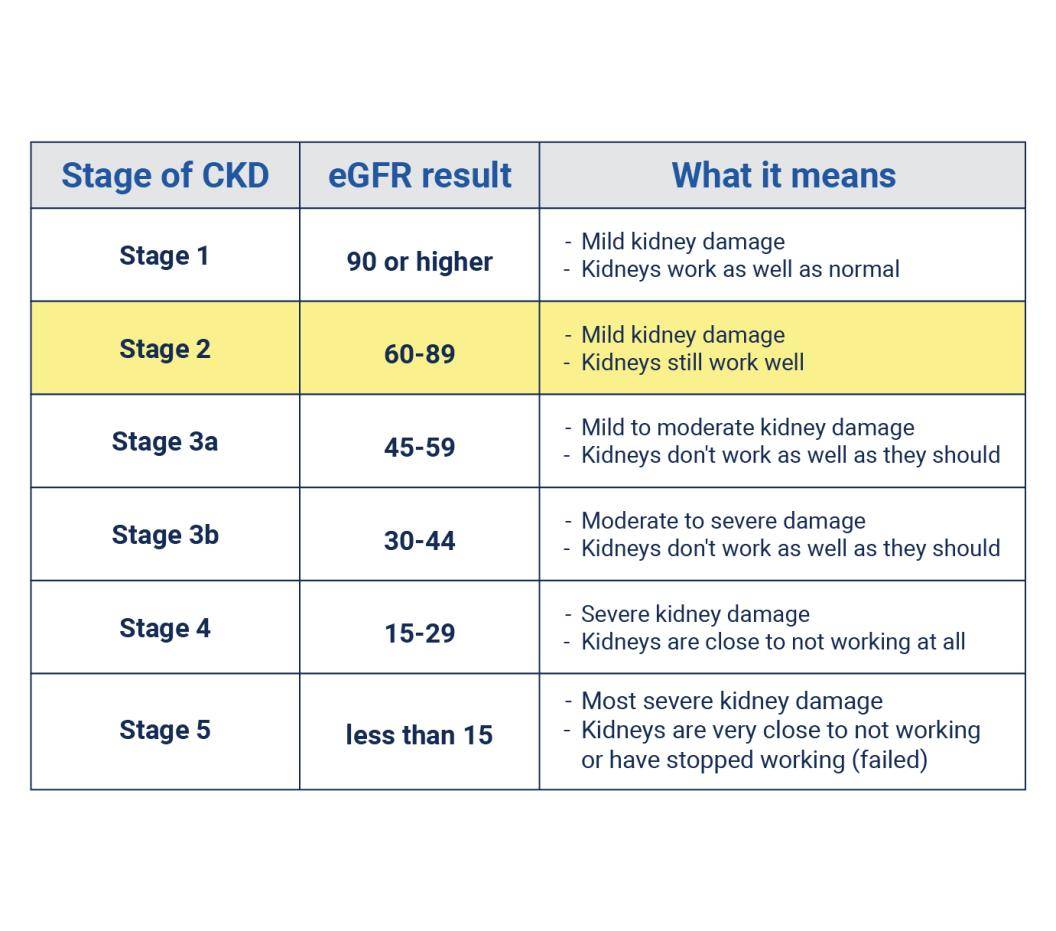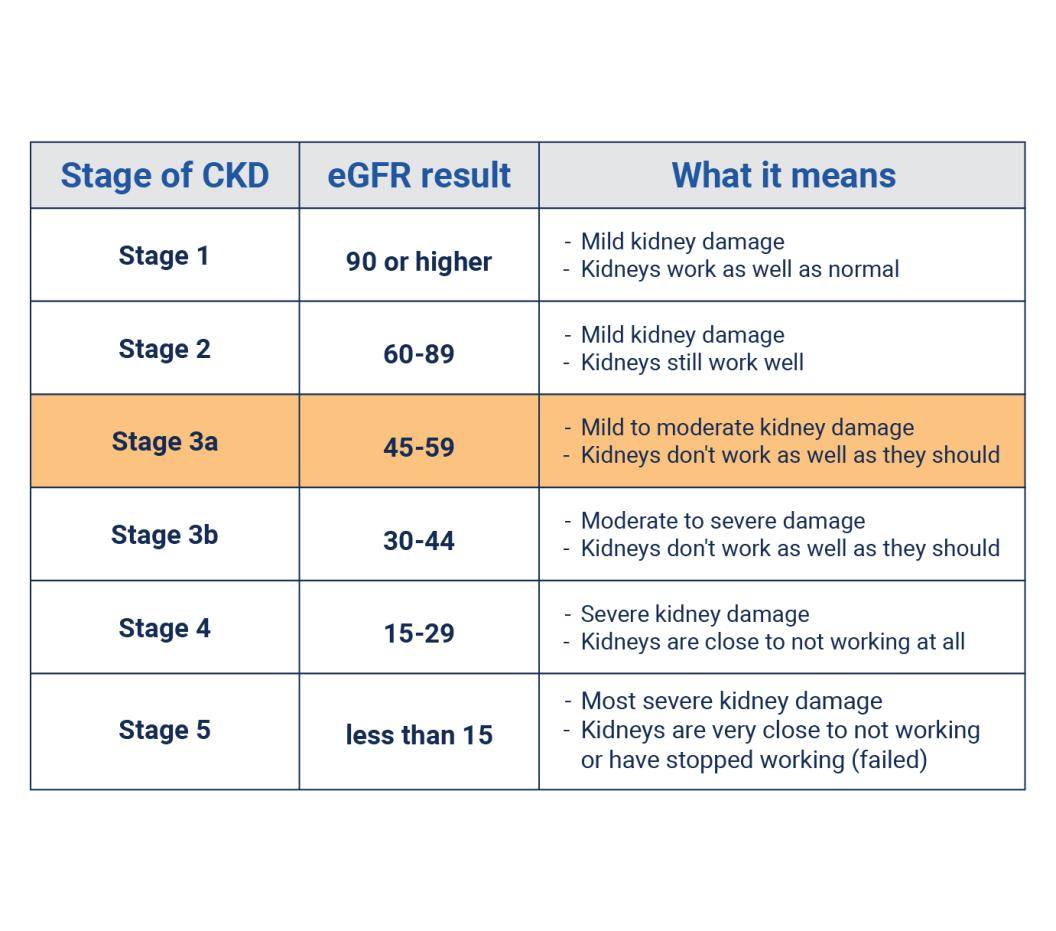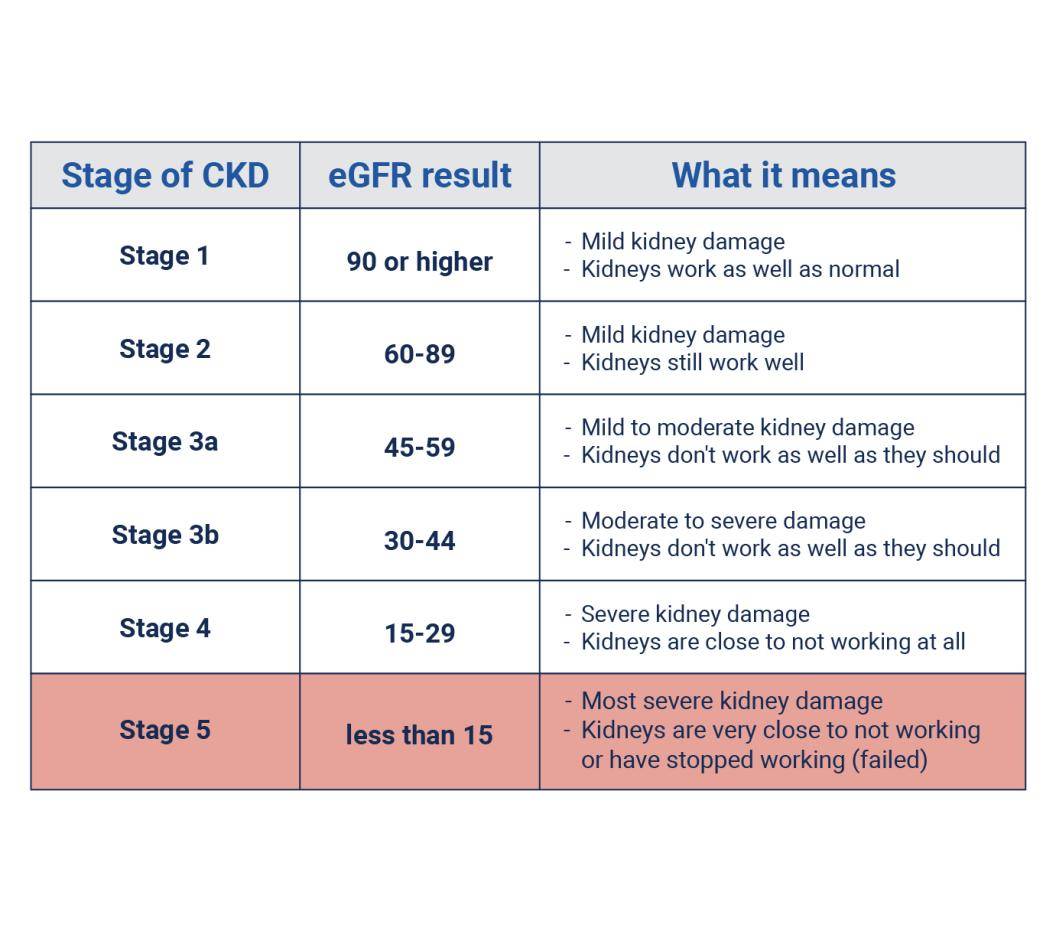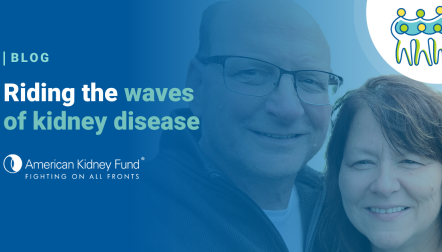Your kidneys filter waste and extra fluid from your blood, which your body removes through urine (pee). If your kidneys are damaged and do not work as well as they should, fluid and waste build up in your body.
How well your kidneys work can depend on your age, overall health and health conditions you may have, such as diabetes and high blood pressure.
Based on the information you entered into our interactive kidney health tool, learn about your kidney health and what you can do to protect your kidneys now and in the future.
Health care providers often check how well your kidneys are working with these tests:
- eGFR (estimated glomerular filtration rate), which is a blood test that measures the amount of creatinine, a waste product, in your blood. The higher the number, the better your kidneys are working. Your eGFR result is also based on your age, sex and weight.
- UACR (Urine albumin-to-creatinine ratio) which is a urine (or pee) test that measures the amount of albumin (a protein that is found in your blood) and creatinine (a waste product in your blood that comes from your muscles).


